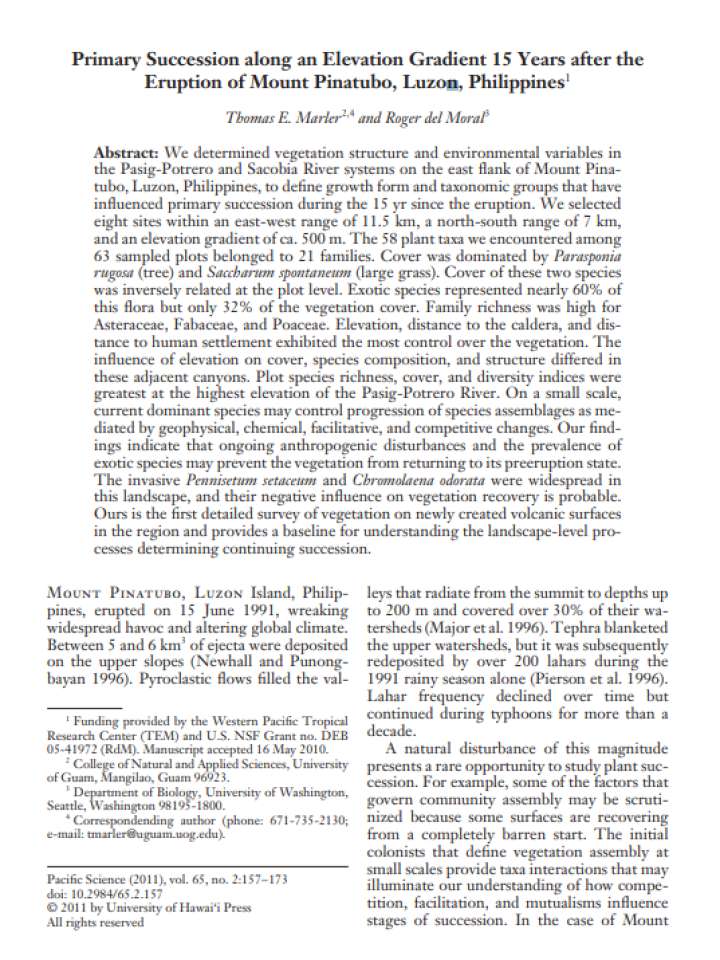Primary Succession along an Elevation Gradient 15 Years after the Eruption of Mount Pinatubo, Luzon, Philippines
We determined vegetation structure and environmental variables in the Pasig-Potrero and Sacobia River systems on the east flank of Mount Pina-tubo, Luzon, Philippines, to define growth form and taxonomic groups that have influenced primary succession during the 15 yr since the eruption. We selected eight sites within an east-west range of 11.5 km, a north-south range of 7 km, and an elevation gradient of ca. 500 m. The 58 plant taxa we encountered among 63 sampled plots belonged to 21 families. Cover was dominated by Parasponia rugosa (tree) and Saccharum spontaneum (large grass). Cover of these two species was inversely related at the plot level. Exotic species represented nearly 60% of this flora but only 32% of the vegetation cover. Family richness was high for Asteraceae, Fabaceae, and Poaceae. Elevation, distance to the caldera, and distance to human settlement exhibited the most control over the vegetation. The influence of elevation on cover, species composition, and structure differed in these adjacent canyons. Plot species richness, cover, and diversity indices were greatest at the highest elevation of the Pasig-Potrero River. On a small scale, current dominant species may control progression of species assemblages as mediated by geophysical, chemical, facilitative, and competitive changes. Our findings indicate that ongoing anthropogenic disturbances and the prevalence of exotic species may prevent the vegetation from returning to its preeruption state. The invasive Pennisetum setaceum and Chromolaena odorata were widespread in this landscape, and their negative influence on vegetation recovery is probable. Ours is the first detailed survey of vegetation on newly created volcanic surfaces in the region and provides a baseline for understanding the landscape-level processes determining continuing succession.
